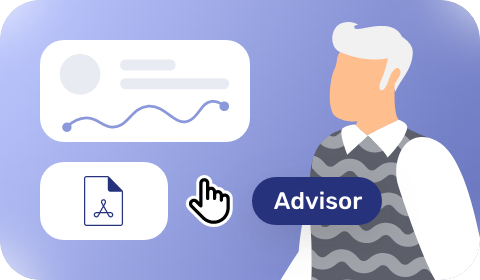I’m on a quest to provoke some thoughtful discussion and action on how to approach digital transformation in the financial industry. As I wrote in an earlier blog post, going digital doesn’t mean leaving the physical world behind. A digital transformation essentially extends the physical world, weaving together the offline interactions and conversations with the digital ones. And ultimately, it should make things easier for both the financial institution and the customer. Unblu has been in this space for more than a decade now, and we’ve seen how digital transformation efforts can succeed in driving new innovation without compromising meaningful customer connectivity – in fact, it can enhance it. Here are a few lessons we’ve learned from those who have had success.
Don’t build processes and tools that you don’t need
Do some digging to find out what you don’t actually know – because you could be building tools and processes that you may not need. In particular, find out what your software can do for you and your customers. It may have the capacity to solve the friction on a customer journey – and that could save you from creating another process. I often remind customers that rather than send out documents to customers through convential means, they can leap frog over that step and use the Unblu co-browsing feature to share it in real time, at the right moment, in the middle of a conversation and make it available through the messaging dialog. For our insurance customers, we’ve been able to solve this major pain point. Their challenge was closing a deal using paper mail – they couldn’t close a sales process immediately when they had to send out documents by paper mail to get a signature. If they couldn’t close during their first customer conversation, their chances are significantly lower of making a sale. Using document sharing, along with Live Chat, the agents could walk their customers through the documentation and use e-signature to by-pass the hiccup of mailing documents.
Get the most out of your software
I often remind customers that they won’t be able to move freely online and offline with their customers, without being able to share the customers online experience together. They are also missing out on the full potential of their investment, when they are not on the same page with the customer. Online portals work best for customer advisory and support when they are used in tandem. If you pilot one single feature for testing, and it’s not supported by the other features that are needed for the journey, it could fail. For instance, live chat makes a lot more sense if it is used together with the live view or co-browsing function. On the other hand, in some instances, you may want to turn off different features. With a video feature pilot, you may discover that customers are uncomfortable being on video with a stranger when they are at home. Or employees may not have the right lighting set up in their cubicle for video to be useful. Unblu allows you to configure journeys to use different features in different ways, depending on what is necessary at a specific moment in a customer’s journey. Perhaps you need to fill in a document with a customer to make it a successful journey. Or show a customer some comparison statistics to demonstrate that your product out-performs the competition. You can pick and choose the feature that can both best enhance the human connection and deliver a digital boost.
Fail and fall, and try again – quickly
It’s impossible to sketch such user journeys without making mistakes. Journeys take time to plot out, along with many iterations. Banks and insurance companies have to let customers be their guide in modelling journeys and be flexible to repeatedly test journeys and features. It’s important to ask why certain features fail during testing. Perhaps failure happened because the user journey needed better modeling. If you sketch a user journey, but haven’t tested it in the “wild”, you will undoubtedly have gaps and get it wrong. Successful digital experiences are achieved through iteration with features being regularly measured, adjusted and pruned, based on user feedback and usage data. Be open to see where there are gaps in the customer journey – it pays off. When financial institutions can deliver these mixed journeys that move seamlessly between physical and digital worlds, communicating with customers feels natural. It turns into a flowing, ongoing conversation – and easy, responsive communication is a key part of delivering value to your customers.
Digital Transformation isn’t a one-shot silver bullet or a one-time event. It needs to be a shift in mindset, and an ongoing process within your organization. Customer needs and technology are constantly changing. Organizations can only respond with a continuous iteration cycle of their digital efforts.




 Interaction Management Hub
Interaction Management Hub Secure Messenger
Secure Messenger Video & Voice
Video & Voice



